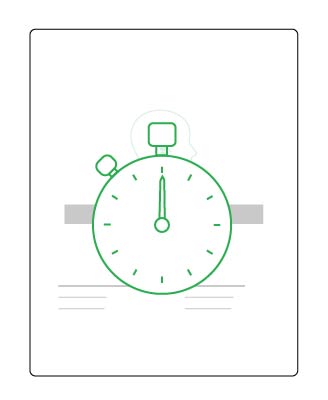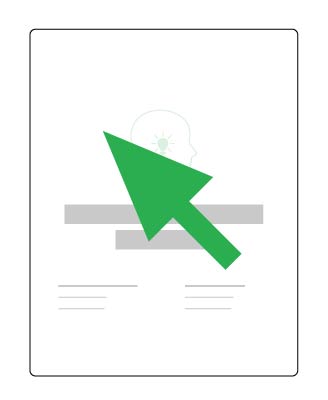Let’s face it: the sales process can feel like a rabbit hole. When you’re staring at a computer screen, wondering whether or not to write “that” email, it’s easy to get lost in your imagination. Will your prospect think you’re too aggressive for following up too often or too soon? Or will he think you’re creepy when you mention what he’s reading on your blog — because, you know, your CRM gives you the ability to track that kind of thing?
In the world of sales, data is a double-edged sword. By tracking the wrong metrics, you might lead yourself to the wrong judgment call. And we’ve all been there: how many times have you looked at patterns that have actually been false signals? Maybe you’re feeling worked up because your prospect is taking too long to respond, only to realize later that she’s just slammed (and doesn’t have time to read your email). Or maybe, you’ve taken too long to follow up. Either way, missing the mark feels frustrating.
If you’re using data to guide your prospect follow-ups, you’re headed in the right direction. Now, you just need a set of power tips to make sure that you’re focused on the right next steps to take. Here are 3 simple ideas to guide you.
Proposal Views

This metric can help you gauge your prospects’ interest in what you have to offer. If they’re spending time reading your proposals, it means that your initial conversations have paid off. In addition to paying attention to views, try to figure out who’s reading and engaging with your document: multiple eyeballs are a strong sign that a potential deal is getting serious consideration. By knowing who’s viewing your sales enablement materials, you can more effectively guide your follow-ups. If nobody is viewing your proposal? No worries—offer to walk your client through your plan over the phone.
Power Tips:
- Instead of tracking raw numbers, look at proposal views over time. A flurry of eyeballs is a strong sign of potential interest.
- If you run into situations where your proposals remain unread, try to identify a pattern. This perspective will help you course-correct potential gaps in your communication.
Time Spent with Proposals

Some proposal views are worth more than others. For instance, if you notice that the CMO at your prospect’s organization spent an hour reading through your doc, it’s probably a good sign—in an age where people have finite attention spans, time is the ultimate asset (one caveat: a person may be spending time with your proposal because he is confused—or he may have walked away from the computer).
This metric will help you follow up smarter — and be less generic. For instance, if you see that someone is spending a lot of time looking at your pricing page, ask if he or she would like to discuss costs or budget. You can also streamline your docs by cutting out the sections that people regularly skip.
Power Tips:
- Integrate your software with your CRM to see if you can optimize your proposals by customer segment.
- Figure out where engagement is high, so you can build upon this knowledge in future follow-ups.
Link Click-Throughs

By including internal links throughout your proposal, you can make it easy for your prospects to ‘request more information’ without actually going through the hassle of reaching out to you and asking a question. These days, buyers’ research processes are self-directed. So give them the resources they need to figure out what they need, without numerous calls or follow-ups. When you monitor the links that they’re clicking, through simple tracking links in your Google Analytics, you’ll develop a clearer picture of what they’re seeking out. The end result? Better conversations.
Power Tips:
- In your sales process, conduct qualitative research around why your prospects are interested in certain links vs. others. Use this info to create even better proposals.
- Try testing placements and calls to action (CTAs) around your links to see if you can drive higher traffic volumes.
Final Thoughts
Remember that you’re dealing with a human being on the other side of the computer screen. If you see a clear pattern, there’s usually a story behind it. But the story might not always be what you expect. Be a skeptic. Play devil’s advocate. Challenge your data story with alternative explanations. Follow up, learn, repeat.
Business & Finance Articles on Business 2 Community
(14)







